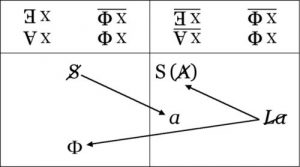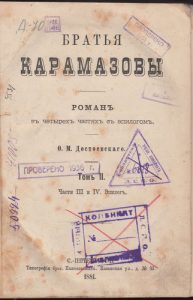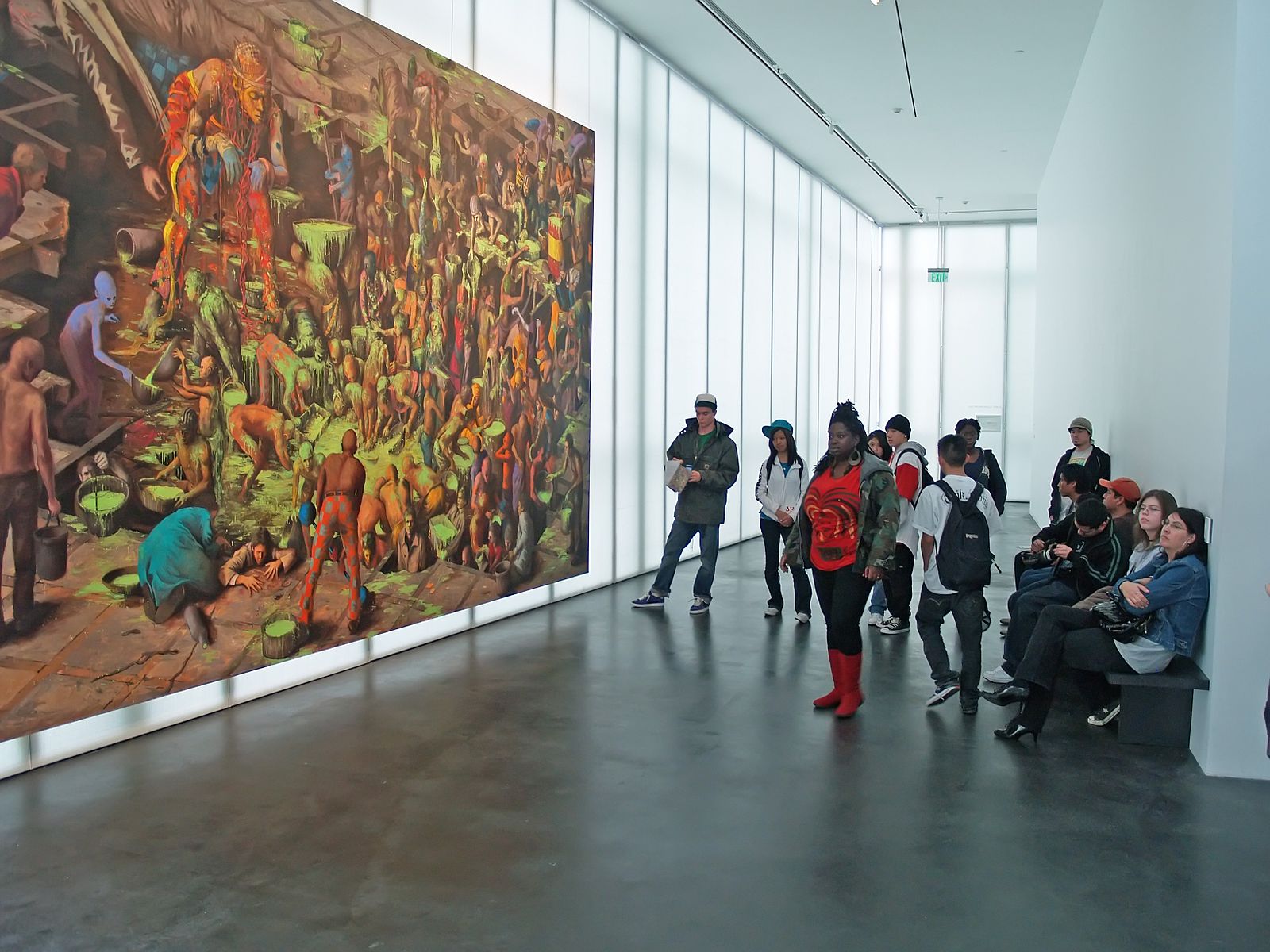The following is the third part in a three-part installment. The first part can be found here and the second here.
The Real Lacan: Sublime Object of Texts
We have hinted that many of the paradoxes and contradictions involved in the topological constitution of the subject which eventually lead Lacan to shift his emphasis onto the real can already be seen in various forms in his Écrits. For instance, we have already noted above how the real image is substituted by a virtual image in Lacan’s re-worked optical model of the mirror stage which Miller reads as “a phase that precedes (according to an order of logical dependence) the mirror stage – which presupposes the presence of the real Other.” [1] This privileging of the real implicitly references Lacan’s famous objet a, but here as throughout the 1950s only the imaginary aspect of this object is emphasized.
Alternatively spoken of as a specular image, a part-object and an object of desire, it is only from 1963 that objet a increasingly acquires connotations of the real and is accordingly termed the object-cause of desire, the object of anxiety, the remainder left behind by the introduction of the symbolic in the real and surplus jouissance. By the 1974 seminar RSI, it finally comes to occupy the center of the Borromean knot precisely where the three registers of the Imaginary, the Symbolic and the Real all intersect. What is important to note is that Lacan considers objet a both real and imaginary, which is a fact he emphasizes in Seminar XX. [2] However, it is never to be considered a symbolic object but rather an object that disrupts the symbolic as was suggested previously.
Thus, if there are any lingering doubts as to Lacan’s own unique structuralist break with the hermeneutical tradition of deep meaning, clarifying what this real object is should help lay these to rest. What we propose to do is briefly discuss two of the key schemas in Seminar XX and then examine the underlying logic of the real using Lacan’s formulae of sexuation, all the while asking what this new emphasis on the real suggests to formulating a possible subversive strategy of textual engagement.
The schema at the beginning of chapter VIII anticipates Lacan’s later concern with topology as it clearly privileges the register of the real over the symbolic and the imaginary. [3] Not only is the only substance recognized by psychoanalysis – jouissance – shown to emanate from the real, the vector leading to the real from the symbolic is to be read as the “realization of the symbolic” as Žižek and Miller teach us to read this schema.
Moreover, objet a is the “‘hole in the real’ that sets symbolization in motion.” [4] Žižek further offers that objet a is one of “three ways to maintain a kind of distance toward [the] traumatic central abyss” of jouissance, yet identification with this real object to deal with jouissance is nevertheless privileged over strategies involving the other two (symbolic and imaginary) objects. In another schema, Lacan reiterates the theory of the four discourses he initially presented three years earlier, emphasizing throughout the seminar the novelty and subversive potential of the analyst’s discourse where objet a comes to occupy the place of agency as it “impossibly” acts as the cause of the desire of the other, directly embodying its lack.[5]
We suggest reading these two schemata together to begin conceptualizing a new way to read texts. That is, if there is a traumatic element to a particular text, this should not be a call to interpret away the element into a meaningful secondary narration (the imaginary solution), nor should this be strictly an opportunity to articulate the senseless structural mechanism that this contingent element thereby exposes (the symbolic solution). If a real engagement is to be privileged, this must somehow actively involve the subjective assumption of the traumatic element as one’s own.
More specifically, reading the left side of the analyst’s discourse as the position of the interpreter of the text and the right side as that of the text, we immediately see how engaging with a text is no longer a two-sided affair: the analyst-reader confronts the troubling cut or gap (the barred S, the split subject) of the text with a knowledge of hermeneutical strategies he himself is barred from using (the S2 is below the bar, repressed) in order to produce a symptomatic reading of the text (the S1, a new master signifier). As we can see, things are now much more complicated as well as ambiguous: there are four terms to consider whenever “we” engage with a “text” and again the troubling aspect of this process is that we seem to be self-relating for we necessarily find that our subjectivity is on the “side” of the text.
In terms of our subjectivity, Lacan seems to suggest that we are truly and radically decentered. Returning to our previous examples, the cut made by the phatic function into Jakobson’s text must somehow be conceived as our element, somehow indexing our own reading of the text. As with Jones’ interruption: for us, it may provide an interesting interpretation to speculate how this episode influenced Lacan’s thinking over the decades via the re-working of the very same theory whose initial presentation was disrupted, but a “real” reading would recognize how Lacan the analyst accomplished the “impossible” move to have actively assumed this episode in its objectivity as that which was most intimately his, so much so that he could not not continually re-work that paper. The paradoxical logic in operation here can be partially addressed through the use of Lacan’s formulae of sexuation.
 A momentary glance at the table of sexuation in chapter VII reveals the presence of many of the algebraic figures found in the other two schemas we discussed above. [6] These “mathemes” are found in the lower half of the table. We will, however, focus on the upper half of the table in which Lacan’s thinking of sexual difference is formalized by means of two non-symmetrical pairs of logical formulae, where the masculine “All” side is found on the left side of the table and the feminine “not-All” on the right side.
A momentary glance at the table of sexuation in chapter VII reveals the presence of many of the algebraic figures found in the other two schemas we discussed above. [6] These “mathemes” are found in the lower half of the table. We will, however, focus on the upper half of the table in which Lacan’s thinking of sexual difference is formalized by means of two non-symmetrical pairs of logical formulae, where the masculine “All” side is found on the left side of the table and the feminine “not-All” on the right side.
Briefly, the not-All logic implies the establishment of a universal through the lack of an exception to the phallic function and this is expressed through the use of a double negative. Translating this in terms useful for our purposes as “there is no presupposition that is not previously posited,” if such a logic is used exclusively by a subject engaged with a text, the corresponding reading of that text would be quite naïve, for there would be a claim of immediate access to its true meaning. In Kantian terms, such a reader would audaciously claim to have grasped the Thing-in-itself of the text (say, what Jakobson really intended with his paper on linguistic and poetics, inclusive of his thorny notion of the phatic function of language). But we need to be careful here as the not-All position does not claim to have grasped the text in its entirety; that involves another logic entirely.
Rather, not-All reasoning proceeds piece-meal, taking each element one by one and thereby showing how there is no-thing that is exceptional. By coming across what some might consider a disturbing element such as the phatic function of language or Lacan’s disruption by Jones, not-All logic at once effects a retroactive positing of a set of presuppositions for that posited element such that it is always-already a part of the existing symbolic system. In the end, no elements stick out since the field of knowledge is infinitely dispersed or flattened out.
 The not-All logic is precisely the logic that underscores the modern insistence that there is no meta-language or meta-position to be had in relation to a text, a claim equally made by Derrida’s post-structuralism, Gadamer’s hermeneutics or Foucault’s own discourse. By articulating this not-All logic, Lacan demonstrates that he fully concurs. Yet he nevertheless claims to bring interpretation as such to its truth.
The not-All logic is precisely the logic that underscores the modern insistence that there is no meta-language or meta-position to be had in relation to a text, a claim equally made by Derrida’s post-structuralism, Gadamer’s hermeneutics or Foucault’s own discourse. By articulating this not-All logic, Lacan demonstrates that he fully concurs. Yet he nevertheless claims to bring interpretation as such to its truth.
In order to understand this, it is crucial to see that the late Lacan did not go further than hermeneutics, he did not tap into its beyond by this emphasis on the real, but rather he re-asserted phenomenology as the description of the ways in which the real shows itself in phantasmatic formations – through distortions of the text – without being signified in them. In this vein, what should interest us as readers of a text is the description, not the interpretation, of the lack in the symbolic order of a dream or a classical Greek text. Lacan does not go deeper but rather stays much more on the surface of things. In other words, by reading his logical equations literally we thereby discover what the feminine not-All logic overlooks: how the absent “no presupposition” nevertheless must take on a certain weight and become positivized.
Moreover, it is precisely through the absence of such an element or precisely because it is removed from the field in question that it can provide a frame for that field. [7] Once we recognize and experience how this purely empty gesture formally assigns a certain set of presuppositions to a certain element, we move to the tautological gesture of the master-signifier (S1) which constitutes a dispersed not-All field into an All field. What eludes the feminine not-All is the real while the enumeration of presuppositions of a posited content is made into a closed series by means of the masculine gesture that establishes an All universal through an exception.
What we need to experience is how both these logics must be grasped together, for the textual strategy that presents itself from the exclusive use of masculine All logic is as faulty as that which results from an exclusive use of not-All logic whose naïve reading professes to grasp the Thing-in-itself of a text. As the All logic of a constitutive exception would have it, by presupposing the Thing-in-itself of a text as dwelling in the unattainable noumenal beyond, the only accessible things left to us finite subjects would be mere distorted reflections and partial aspects of that noumenal Thing. In this case, we would have to make do with a succession of competing interpretations of texts, as the Thing of the text (say, the true intention of Jakobson’s introduction of the phatic function or what the Jones interruption truly meant to Lacan) is lost forever.
Thus, our choice seems condemned to either one of naïve certainty of having reached the truth of a text (the not-All strategy) or the equally questionable fundamental presupposition that the unattainable truth is “out there” but at best can only be approached through the infinite task of finer and finer approximations (the All strategy). Lacan, however, endeavors to think both of these options together, since what we are dealing with here is the paradoxical disjunction between phenomenology and hermeneutics. [8]
Borrowing Žižek’s term and topological schematic, what the Real Lacan offers us is the possibility of a radically non-hermeneutical phenomenology as a strategy of textual engagement. [9] However, this return to phenomenology is radically devoid of sense, since what is of concern here is the phenomenological description of spectral phantasms which stand in for constitutive nonsense. Let us say that the domain of meaning (accessible to hermeneutics) and the domain of symbolic structure (accessible through structural analysis) form two overlapping circles.
At the intersection of these two circles is the phenomenological description of the way in which the gap of the text relates to its impossible objectal correlate (objet a) found in the text. This relation is precisely what Lacan calls fantasy and as we can see, its matheme is inscribed in the table of sexuation as (barred S<>a). In our terms, it is the way in which the interpreting subject relates to its own impossible embodiment in a little bit of jouissance (objet a) found amongst the other elements in the text.
Returning to our examples, to accomplish this we would need to reflect on the phenomenological experience of reading Jakobson and encountering the frustrating notion of his phatic function to further recognize how such an element re-embodies our own subjective experience. Or alternatively, we would need to experience how the very effort of Lacan’s continual re-working of the mirror stage (positing as it does its own presuppositions which thereby forecloses its own origins in the traumatic cut of Jones’ interruption) must again be supported by a “little piece of the real” which holds the place of the founding gesture of these subsequent mirror stage re-workings qua synchronous order. In terms of more classical texts, fantasy is what allows us to deal with the ghostly apparition of King Hamlet or Christ Himself when they decide to leave their tombs or how we are able to stand in awe (and not horror) of the sublime and ethical figure cut by Antigone.
For Lacan, Antigone’s gesture elevates her act to the dignity of the Thing, thereby embodying in a sublime object the very hermeneutical framework with which we read Sophocles’ play. [10] The Thing of the text of Antigone is thus revealed to be a mere phantasm which fills out the empty shell of objet a. For Derrida or Gadamer, such textual readings are evidence that Lacan’s theory is still marked by the “metaphysics of presence.” Again, they rightly insist that there is no meta-language, that the text is always-already framed by its own commentary since the interpretation of a text resides, in some sense, on the same plane as the text. Hence, the hermeneutical technique endeavors to render visible the contours of this invisible frame – which, precisely by staying invisible – in advance determines our interpretive horizon in relation to the text.

What is surprising and little understood is that, again, Lacan fully embraces this thesis but supplements it with an unheard-of gesture: the hermeneutical circle of meaning is always linked to a point within the field disclosed by it. This means that the frame of our view when we interpret a text is always itself framed or re-marked by a part of its own content. The text, only ever disclosed to us through a transcendental framework, returns the gaze from some point within the text, a point which resists all attempts to incorporate it into a meaningful context.
It is a concrete point embodying meaning-as-such. It is this point from which the text looks back at us. This is a disturbing experience, no doubt, but one that can serve us well. Perhaps as trifling a detail as the smashed and bloody fingernail of Lise condenses our reading of an entire passage of unrequited and sublime love in Dostoevesky’s The Brothers Karamazov, or perhaps its thesis of “Love thy Neighbor” finds its truest expression in the corpse of Father Zosima, the unexplainable stench of which we are told repels all his former, loving disciples.
These examples show that each troubling text or part thereof does not simply have one more story to tell; nor is it to be exposed as merely embedded within a contingent framework; rather, by conceiving the masculine and feminine logic simultaneously, we are able to experience how the topology of a text as its underlying structure necessarily conjoins the loftiest and abstract notion with its most trivial concrete detail in an Hegelian speculative identity. For Lacan, truth can only come to be where it makes itself its own result.
Conclusion
We have shown how already with the Symbolic Lacan of the 1950s, the hermeneutical strategy of uncovering deep meaning – a tradition the young Imaginary Lacan of the 1930s once played a part – is exposed as deficient for not adequately addressing the very framework with which the subject approaches a text. But it was not until the Real Lacan of the 1970s returns to phenomenology that the concern with the signification of texts is thoroughly suspended through its “impossible” identity with a paradoxical point which re-frames the hermeneutical framework.
By working through the difficult topology embedded in the final seminars, Lacan offers us the opportunity to experience how the meaning of a text is not some buried treasure given in advance waiting to be unearthed in our pursuit of the ethical foundations of the Other, but rather is constituted through a series of (failed) interpretations. When we experience how these interpretations are part of the text itself, of how “through our interpretations, the Text itself is in a way ‘in search of itself’… [how] by means of our reading of the Text, the Text itself reads and (re)writes itself,” then we have reached a proper Lacanian textual reading. [11]
This reading quite simply confronts a text with its own hidden presuppositions, thus revealing its disavowed truth. [12] The unsettling truth for us today is that it is the very hermeneutical pursuit of the ethical Thing of the text which masks how a radically free and truthful reading of the text is indeed possible. Today, we can no longer play the perverse game of cat and mouse with a supposed noumenal truth of a text. It is here that Lacan becomes the most consequential of Kantians, bringing Kant’s practical philosophy to its truth with his implication that one cannot legitimately scapegoat the text for one’s reading of it.
If what constitutes our hermeneutical horizon when we engage with a text can be thought of as a set of signifying elements, because of the ex-sistence of the absent “no presupposition,” this horizon is positioned at the same level at its elements so the proper interpretive gesture is to find that one paradoxical element in the text that is the absence of this element itself. This is the same as saying our hermeneutical framework must be again en-framed by one of the very elements it itself discloses. Otherwise, there is no way to account for why the framework does not collapse in on itself. The absent “no presupposition” performs this crucial function of keeping such minimal distances.
Another name for this absence is the Lacanian subject, the pure thought of which could be placed into speculative identity with, of course, one’s feet. This subject continues to terrorize the hermeneutical approach, amounting to “a bone caught in its throat” as Žižek might say. [13] But at the very same time and precisely as such, this subject constitutes the very space and the very possibility of textual interpretation.
William J. Urban holds an MA and PhD in Humanities from York University, as well as a BA and MA in Economics from St. John Fisher College and the University of Toronto. He is the author of Lacan and Meaning: Sexuation, Discourse Theory, and Topology in the Age of Hermeneutics, published in 2015.
Featured image: “Motif Romanesque,” Maurice Denis, 1890. Los Angeles County Museum of Art.
[1] Jacques Lacan, Écrits: The First Complete Edition in English, trans. Bruce Fink (New York: W.W. Norton & Company, 2006), 904.
[2] Lacan, The Seminar of Jacques Lacan: On Feminine Sexuality, The Limits of Love and Knowledge, Book XX, Encore 1972-1973, ed. Jacques-Alain Miller and trans. with notes by Bruce Fink (New York: W.W. Norton & Company, 1998), 77.
[3] Ibid., 83.
[4] Slavoj Žižek, Looking Awry: An Introduction to Jacques Lacan through Popular Culture (Cambridge: The MIT Press, 1991), 135.
[5] Lacan, Seminar XX, 21.
[6] Ibid., 78.
[7] Žižek, Looking Awry, 94.
[8] Thus, we note how the Real Lacan of the 1970s, especially with his sexuated logic, offers not one strategy of textual engagement in addition to his Imaginary and Symbolic offerings, but at least three others: not-All, All and their “impossible” joint conception in the analyst’s discourse. These latter versions could be said to take precedence in that they reveal the topology of objet a which links all three registers together.
[9] Žižek, The Plague of Fantasies (London: Verso, 1997), 218.
[10] Lacan, The Seminar of Jacques Lacan, Book VII: The Ethics of Psychoanalysis 1959-1960, ed. Jacques-Alain Miller and trans. with notes by Dennis Porter (New York: W.W. Norton & Company, 1997), 112.
[11] Žižek, For they know not what they do: Enjoyment as a Political Factor (London: Verso, 2002), 174n37.
[12] Žižek, The Parallax View (Cambridge: MIT Press, 2006), ix.
[13] See, for instance, Žižek, Plague, 277, 288; Parallax View, 89. Žižek most often uses this metaphor to imply a subversive link between the Lacanian subject and Hegel’s radical speculative identity of “Spirit is a Bone” and interestingly points out one passage in which Lacan says much the same thing (Žižek, For they know not, 94n28). The écrit in question is “The Subversion of the Subject and the Dialectic of Desire” and the passage is as follows:
“Certainly there is a bone(r) [os] here. Since it is precisely what I am claiming – namely, what structures the subject – it essentially constitutes in the subject the gap that all thought has avoided, skipped over, circumvented, or stopped up whenever thought apparently succeeds in sustaining itself circularly, whether the thought be dialectical or mathematical.” (Lacan, Écrits, 820.)




